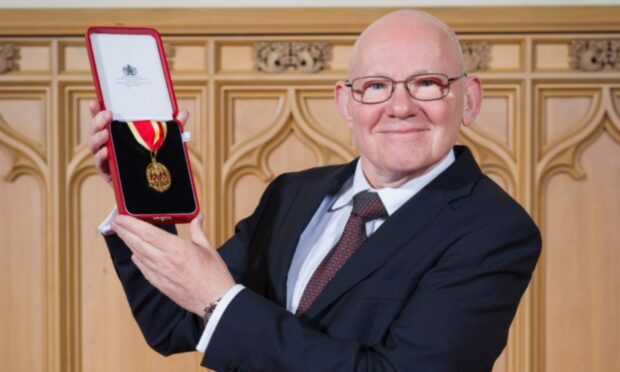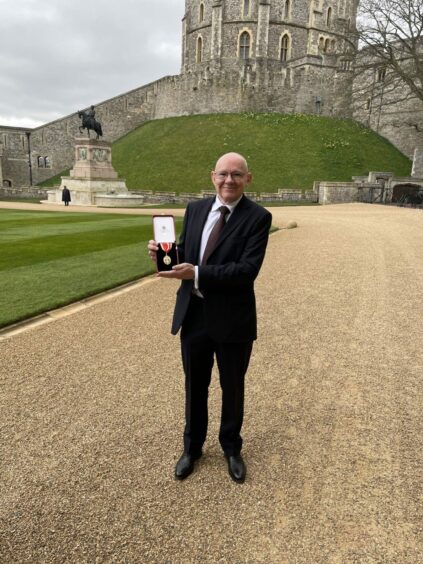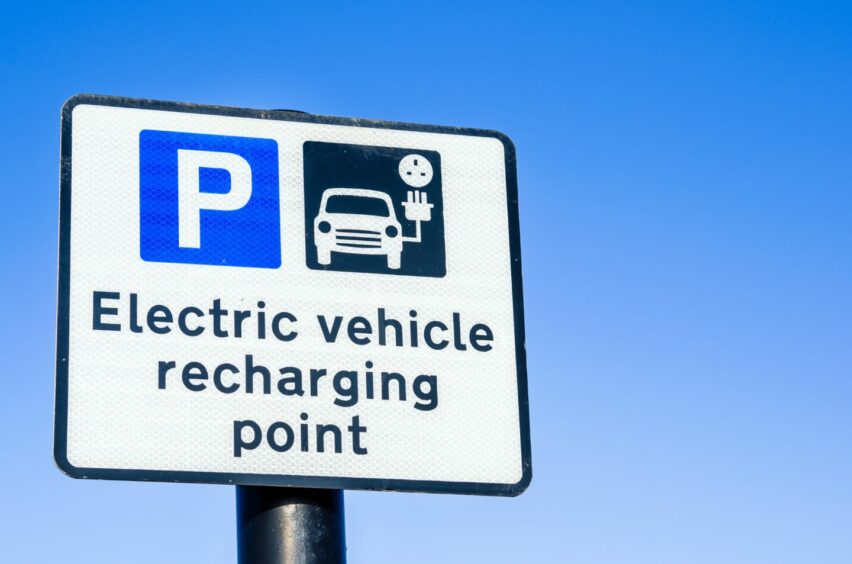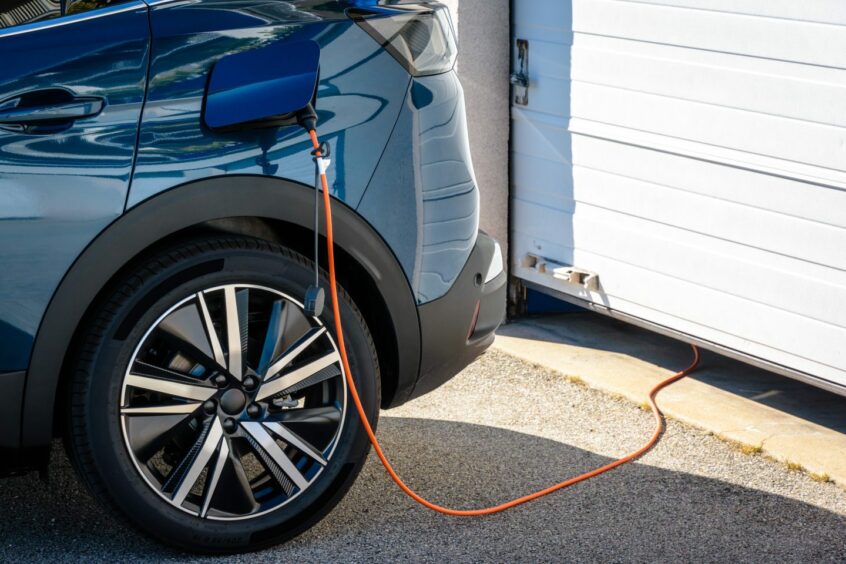It would have been difficult to pack any more onto Peter Bruce’s already glittering CV, but the distinguished Aberdonian now boasts a knighthood for his services to science and technology.
Sir Peter spent 20 years at St Andrews University and worked with chemistry Nobel Prize co-winner John Goodenough.
He is Wolfson professor of materials at Oxford University, where his research interests embrace materials chemistry and electrochemistry.
Former Airyhall pupil
His university role has a particular emphasis on energy storage, especially lithium and sodium batteries.
He is also physical secretary to the UK’s foremost scientific body, the Royal Society.
The new knight of the realm attended Airyhall Primary and Grammar School, then Aberdeen University for his first and postgraduate degrees.
His two decades at St Andrews University saw him undertake research into lithium batteries, tackling some of the fundamental scientific barriers to advancing the technology.
Sir Peter’s career has been littered with recognition by his fellow academics and institutions.
Accolades to date include the Tilden prize of the Royal Society of Chemistry in 2008, Carl Wagner award of the Electrochemical Society in 2011, Liversidge award of the Royal Society of Chemistry in 2016 and Hughes medal of the Royal Society in 2017.
He has also been chosen as “highly cited researcher” by Thomson Reuters every year since 2015.
As well as directing the UK Energy Storage Hub (SuperStore) and a consortium on lithium batteries, Sir Peter is a founder and chief scientist of the Faraday Institution, the UK centre for research on electrochemical energy storage.
He received his knighthood from the Princess Royal at Windsor Castle in February, in a ceremony he described as “a well-oiled machine”, after being included in the late Queen’s Birthday Honours List.
Clean energy transition good for economics as well as the planet
Sir Peter said: “It was a lovely day, a very well-rehearsed process, a very well-oiled machine.
“I was surprised how much time Princess Anne spent chatting to me. She knew about energy storage and what needs to be done in that area.”
The new knight clearly has a passion for all things batteries and firmly believes the transition from fossil fuel to clean energy is not just good the planet – but good for hard-headed economics as well.
“The danger is we don’t decarbonise fast enough,” he said, adding: “We need to keep warming below 2C, preferably 1.5C.
“The amount of CO2 emissions in the UK are small compared to bigger countries, but everybody has to do their bit.
“It is up to us to show leadership again. Clearly there are economic opportunities in low-carbon technologies not just within the UK but also in selling from the UK to the world. This is the future of the economy.
“If we are going to have a prosperous country, the lesson we have learned during the past 25 years is we can’t rely on the financial sector alone – good though it is.”
Sir Peter and two colleagues move in high circles and – after putting proposals to the government – set up the highly influential Faraday Institute for battery research, linking the academic world to industry.
He modestly described the move as “pretty successful”.
The most obvious application of batteries is for electric vehicles (EVs), with impetus coming from both Holyrood and Westminster.
But the current high cost of such alternatively-fuelled cars needs incentives.
Sir Peter added: “The future is green jobs and if we don’t get a stake in that, then Scotland and the UK will suffer, so the challenge is how.
‘Significant subsidies’ for EVs in US
“How do you get costs of the vehicle down? You either subsidise it or you try to make technology at lower cost. You probably have to do both as one of the biggest costs of an EV is the battery.
“There is a research and development challenge in getting the costs of these batteries down, to use lower price materials and manufacturing processes.
“The US offers significant subsidies for people to buy EVs, provided the components that go into them are made in America – so driving home-based manufacturing.
“The European Union is doing the same thing. It is important the UK looks seriously at what it is going to do or the danger is we lose out.”
Along with myriad other manufacturing cost rises, the price of raw materials has soared.
This has made battery elements cobalt and nickel more expensive.
Sir Peter stressed the need to recycle these materials, adding: “We have to develop a circular economy.
“We have to recycle and reuse; as a planet we just have to do this or we will not have enough raw materials. Everyone needs to push harder with the recycling agenda. Everybody needs to step up.
“We are going to have to manufacture and make products that are more easily disassembled back into their components.”
‘Unfortunate timing’ for Britishvolt
UK battery manufacturing took a severe blow recently with the collapse into administration of Britishvolt.
But Sir Peter believes other such companies are well poised to take up the mantle.
These include Amte Power, of Thurso, with which Sir Peter said he was “engaged”.
He added: “Britishvolt had the headwinds of the recent financial crisis.
“It is unfortunate timing that it hit problems and, of course, energy costs going up.
“This only underlines the fact we have to redouble our efforts to secure the supply chain in battery manufacturing if we are going to have a viable automotive sector and tens of thousands more jobs in the UK supply chain.
“We have to do a lot to significantly expand and reinforce our (EV) recharging network.
“If you take EVs, there are three things government needs to think about – deployment, development and research.
“There is no real technological invention necessary in charging. It is a question of getting more of it out there and deploying faster charging .
“Vehicles coming along now can typically charge 100 kilwatts and above. That is quite fast.
“A lot of UK infrastructure can’t charge that fast. We need more and faster charging.”
Sir Peter acknowledges EVs need to become cheaper to be affordable but that depends on the cost of batteries, one of the major components.
So-called “range anxiety” over how long an electric car can travel before it needs to be charged also needs to be addressed. Batteries that can be recharged in 10 to 15 minutes are also needed.
Both these issues are research and development challenges.
The danger is we don’t decarbonise fast enough. My research is in the basic science that underpins batteries.”
Sir Peter Bruce
“The key things for government and all stakeholders are to deploy, develop and research,” Sir Peter said, adding: “Wind and solar have been largely deployment challenges.
“I worry governments think the same is true for all low-carbon technologies.
“Some vital low carbon technologies like hydrogen, batteries and carbon capture need research and development, as well as demonstration at scale.
Aviation potential
“The danger is we don’t decarbonise fast enough. My research is in the basic science that underpins batteries.”
Sir Peter works with batteries for storage on the electricity grid and is also closely involved with a technology known as lithium air.
It is said to have the potential to decarbonise aviation, although batteries will need to be “significantly better” than they are now for that breakthrough to come, he said.





Conversation